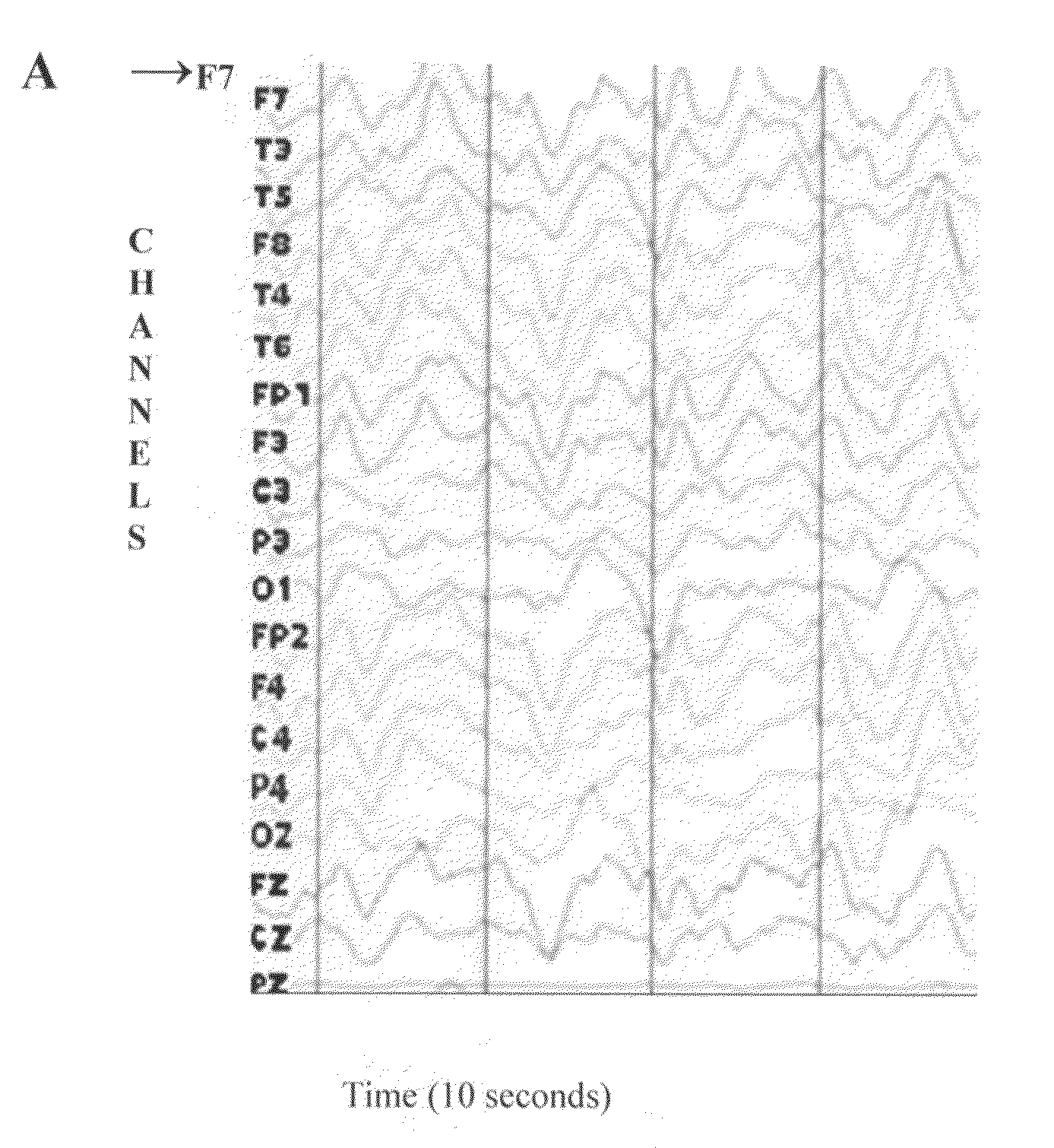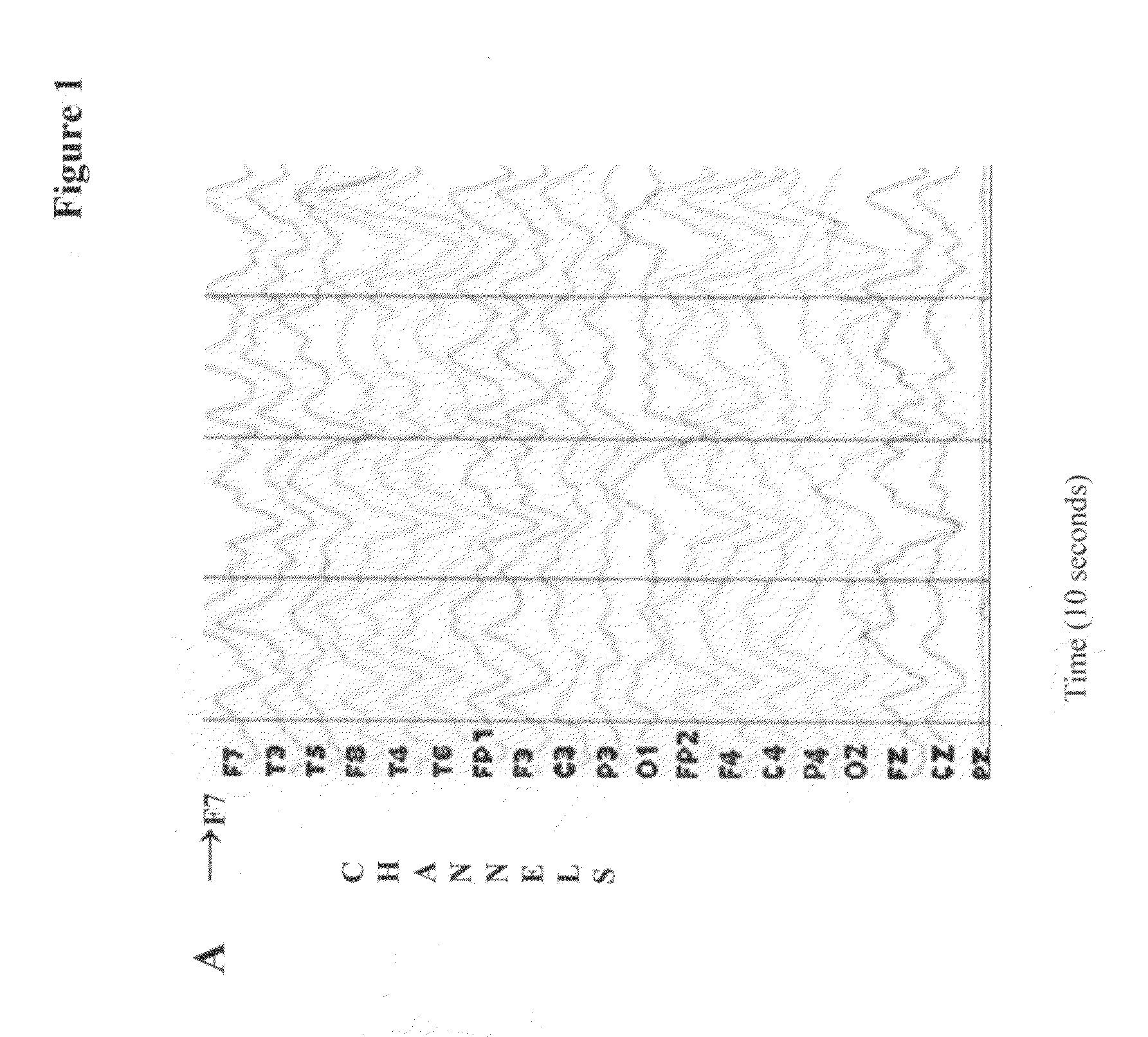Methods based on fluctuations in cortical synchronization
a cortical synchronization and synchronization technology, applied in the field of pediatric brain conditions, can solve the problems of no practical model, complex brain, and inability to use single diagnostic tools, and achieve the effect of improving patient quality and increasing signal variability over tim
- Summary
- Abstract
- Description
- Claims
- Application Information
AI Technical Summary
Benefits of technology
Problems solved by technology
Method used
Image
Examples
example 1
Materials and Methods
Patient Population and Clinical Data
[0038]Patients were included if they were admitted to the Critical Care Unit at the Hospital For Sick Children, Toronto, Canada with traumatic brain injury and parental consent was obtained. Exclusion criteria were: suspected brain death, penetrating trauma as a cause of the head wound and parental refusal of consent. Control subjects were also recruited who had no history of seizures, no current neurological conditions, no history of head injury and no psychiatric conditions. The study was approved by the Hospital for Sick Children Research Ethics Board.
[0039]Each patient had baseline data of age, gender, mechanism of injury, pediatric risk of mortality score recorded and Glasgow coma scale was recorded on admission and at the time of each electroencephalogram. A computerized tomography scan was performed on admission and repeated as deemed necessary by the attending intensive care physician or neurosurgeon and were evaluated...
example 2
Patient Population and Clinical Data
[0064]Retrospective study was conducted where patients were included if they were admitted to the Critical Care Unit at the Hospital For Sick Children, Toronto, Canada in coma from any of the following: traumatic brain injury, cardiac arrest, drowning, stroke, shock and organ failure, metabolic disorder or infectious disease. They had to have had a minimum of 2 EEGs at least 24 hours apart. Consent was waived by the Research Ethics Board. The control group used for the prospective observational pilot study was again used for this retrospective study.
[0065]Information gathered on each patient included age, gender, etiology of coma, and Glasgow coma scale which was recorded on admission, at the time of each EEG and upon discharge (unless the patient died). EEG recordings
EEG Recordings
[0066]Each EEG was 30 minute in length, using a standard 10-20 montage with Pz prime (Pz′) as the reference electrode. Bandpass width of 1-70 Hz and a 60 Hz notch filte...
PUM
 Login to View More
Login to View More Abstract
Description
Claims
Application Information
 Login to View More
Login to View More - R&D
- Intellectual Property
- Life Sciences
- Materials
- Tech Scout
- Unparalleled Data Quality
- Higher Quality Content
- 60% Fewer Hallucinations
Browse by: Latest US Patents, China's latest patents, Technical Efficacy Thesaurus, Application Domain, Technology Topic, Popular Technical Reports.
© 2025 PatSnap. All rights reserved.Legal|Privacy policy|Modern Slavery Act Transparency Statement|Sitemap|About US| Contact US: help@patsnap.com



